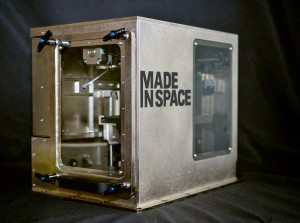3D Printer Ready for International Space Station

Latest News
June 30, 2014
 The Made In Space 3D printer has been cleared for installation in the International Space Station. Image: Made In Space
The Made In Space 3D printer has been cleared for installation in the International Space Station. Image: Made In SpaceNASA has given its blessing to the Made In Space 3D printer due to be shipped to the International Space Station (ISS). According to Made In Space, the printer passed its final certifications and testing ahead of schedule, which means it will launch on SpaceX CRS-4 this August.
The printer was tested for electromagnetic interference, vibration, materials compliance, electrical, and ISS interfaces. The first items scheduled to be printed on the ISS were also tested. Testing the printer in microgravity will validate the use of the technology for off-planet use, and is a key part of the 3D Printing in Zero-G Technology Demonstration project.
“NASA was able to provide key guidance on how to best comply with strenuous space certification, safety and operational requirements and Made In Space excelled at incorporating that insight into the design,” said Niki Werkheiser, the NASA 3D Print Project Manager. “As a result, the hardware passed testing with flying colors. Made In Space now has first-hand experience of the full ‘A-to-Z’ process for designing, building, and testing hardware for spaceflight.”
The printer will be installed in the ISS Microgravity Science Glovebox, and will print a set of 21 demonstration parts and tools. The parts will be returned to earth for analysis. A second phase will involve printing parts for crew tools, payload ancillary hardware, and commercial applications. Those tests will potentially lead to a permanent additive manufacturing facility on the ISS.
With 3D printers on board, ground staff and ISS crews can potentially print important parts and instruments, as well as enable crew members to fabricate parts for emergency repairs. In the future, satellites could even be printed and assembled on the ISS, and released into orbit.
The company has already tested the printer aboard a modified Boeing 727 in microgravity conditions.
Wired conducted an interview with Made In Space and NASA a few months ago to discuss the project, and you can learn more in the video below.
Source: Made In Space
Subscribe to our FREE magazine, FREE email newsletters or both!
Latest News
About the Author
Brian Albright is the editorial director of Digital Engineering. Contact him at [email protected].
Follow DE





